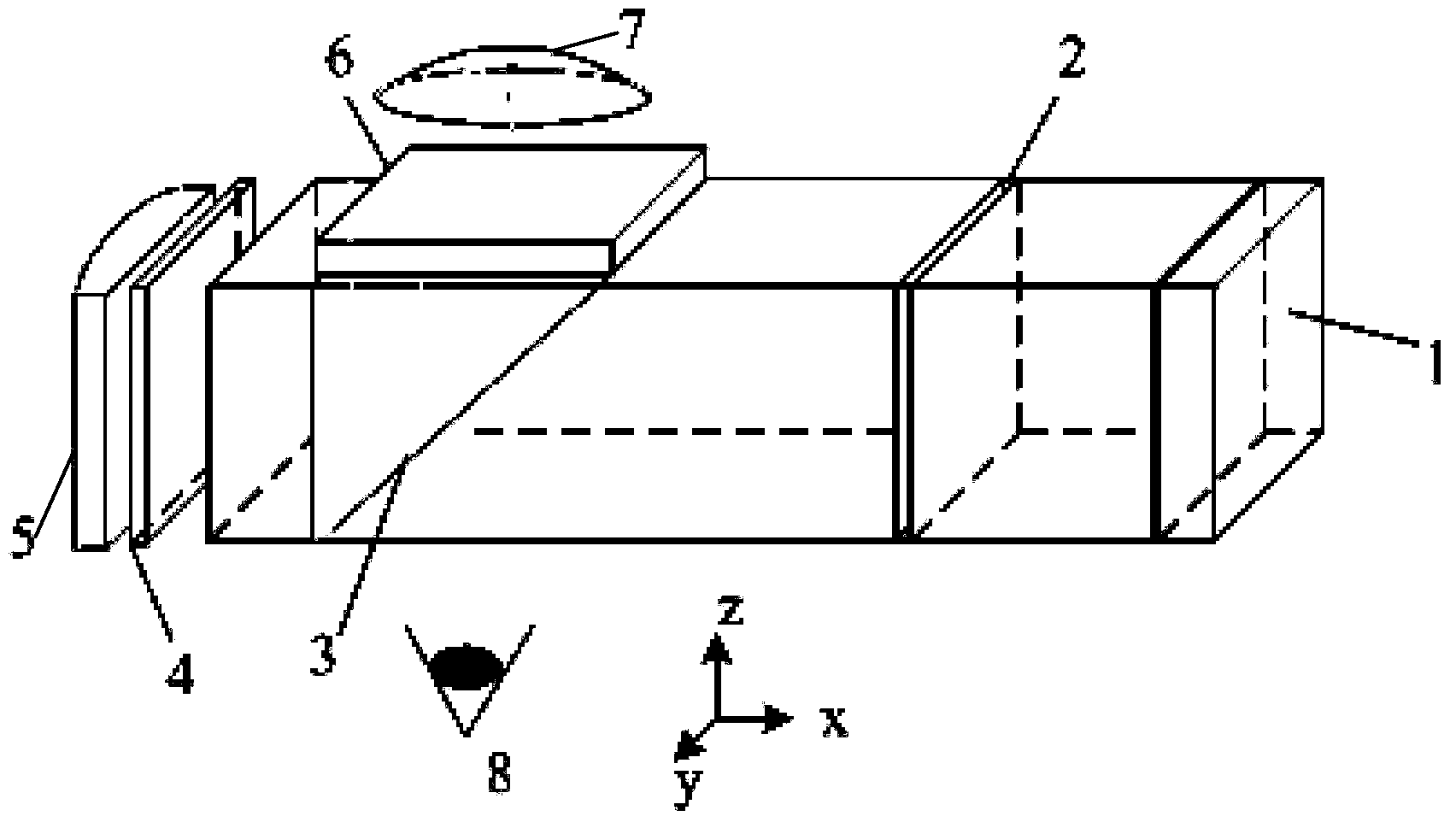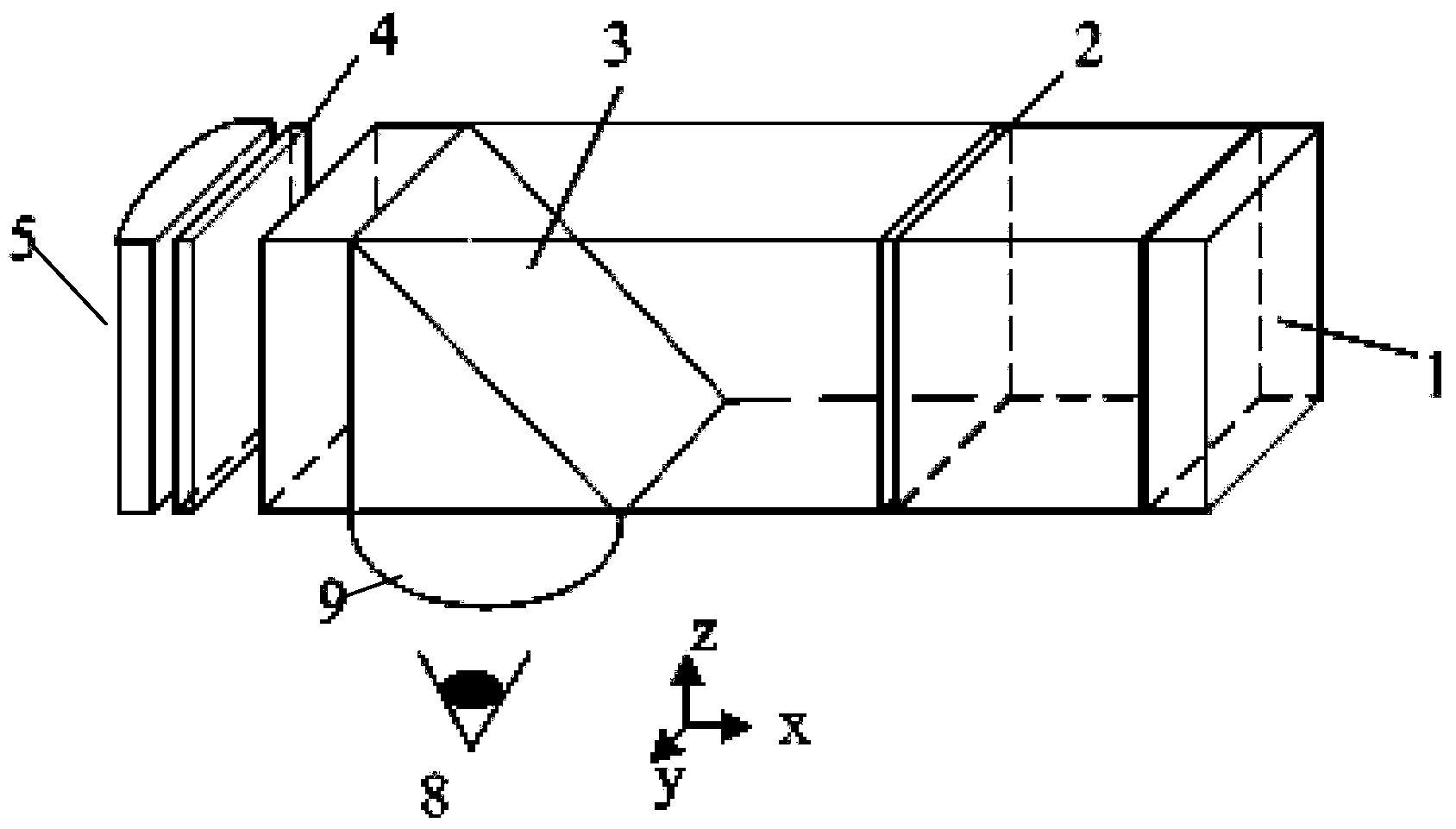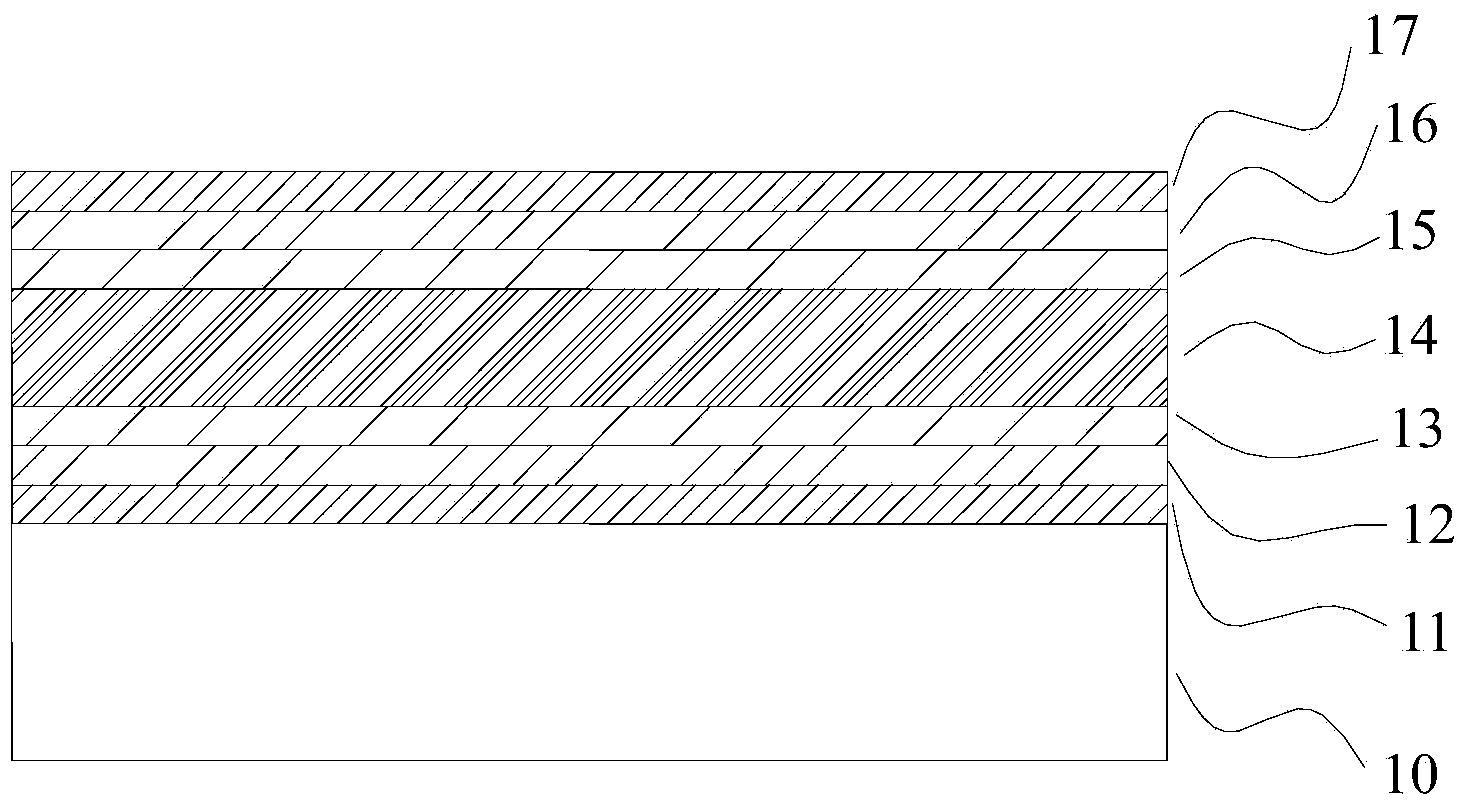Optical system for dressing display
An optical system and display technology, applied in the field of optical systems, can solve the problems of reducing the divided volume of the head-mounted display, and the optical device being unsuitable for patients to use.
- Summary
- Abstract
- Description
- Claims
- Application Information
AI Technical Summary
Problems solved by technology
Method used
Image
Examples
Embodiment 1
[0061] like figure 1 As shown, it is an optical system for wearable display, including: a display device 1 (OLED) that generates an image light signal; a 1 / 2 wave plate 2 arranged on the transmission optical path of the image light signal of the display device 1; The polarization beam splitter 3 at the output end of the / 2 wave plate 2; the first 1 / 4 wave plate 4 for receiving the image light signal (ie, the P component image light signal) passing through the polarization beam splitter 3; The image optical signal of the 1 / 4 wave plate 4 is reflected back through the reflector 5 of the first 1 / 4 wave plate 4 (embodiment 3); used to receive back through the first 1 / 4 wave plate 4 and then polarized The first lens 7 reflects the image light signal from the dichroic prism 3 . The beam-splitting surface of the polarization beamsplitter prism 3 reflects the image light signal passing through the first 1 / 4 wave plate 4 to a direction away from the human eye 8, and a second 1 / 4 wave ...
Embodiment 2
[0063] like figure 2 As shown, it is another optical system for wearable display, including: a display device 1 (OLED) that generates an image light signal; a 1 / 2 wave plate 2 set on the transmission optical path of the image light signal of the display device 1; The polarization beam splitter 3 at the output end of the 1 / 2 wave plate 2; the first 1 / 4 wave plate 4 for receiving the image light signal (ie, the P component image light signal) passing through the polarization beam splitter 3; The image light signal of a 1 / 4 wave plate 4 is reflected back through the reflector 5 of the first 1 / 4 wave plate 4 (embodiment 4 is used); for receiving it back through the first 1 / 4 wave plate 4 and then passing through the first 1 / 4 wave plate 4 The second lens 9 reflects the image light signal from the polarization splitter prism 3 . The beam-splitting surface of the polarizing beam-splitting prism 3 reflects the image light signal passing back through the first 1 / 4 wave plate 4 to th...
Embodiment 3
[0065] like image 3 As shown, it is a mirror, including a glass substrate 10 and a base layer, a high-reflection layer and a protective layer arranged on the glass substrate 10 in sequence, and a high-reflection film 19 is formed by the base layer, a high-reflection layer and a protective layer; the base layer and the glass The substrate 10 is closely attached, and the base layer includes Ti 3 o 5 Layer 11, SiO 2 Layer 12 and Al 2 o 3 Layer 13, where Ti 3 o 5 The layer 11 is closely attached to the glass substrate 10; the high-reflection layer includes a silver-copper alloy layer 14, and the silver-copper alloy layer 14 is formed by mixing 30% by weight copper and 70% by weight silver; the protective layer includes sequentially Al set 2 o 3 Layer 15, SiO 2 Layer 16 and Ti 3 o 5 Layer 17, where Al 2 o 3 Layer 15 abuts silver-copper alloy layer 14 . That is, from the glass substrate 10 along its thickness direction (direction away from the glass substrate 10), Ti ...
PUM
 Login to View More
Login to View More Abstract
Description
Claims
Application Information
 Login to View More
Login to View More - R&D
- Intellectual Property
- Life Sciences
- Materials
- Tech Scout
- Unparalleled Data Quality
- Higher Quality Content
- 60% Fewer Hallucinations
Browse by: Latest US Patents, China's latest patents, Technical Efficacy Thesaurus, Application Domain, Technology Topic, Popular Technical Reports.
© 2025 PatSnap. All rights reserved.Legal|Privacy policy|Modern Slavery Act Transparency Statement|Sitemap|About US| Contact US: help@patsnap.com



